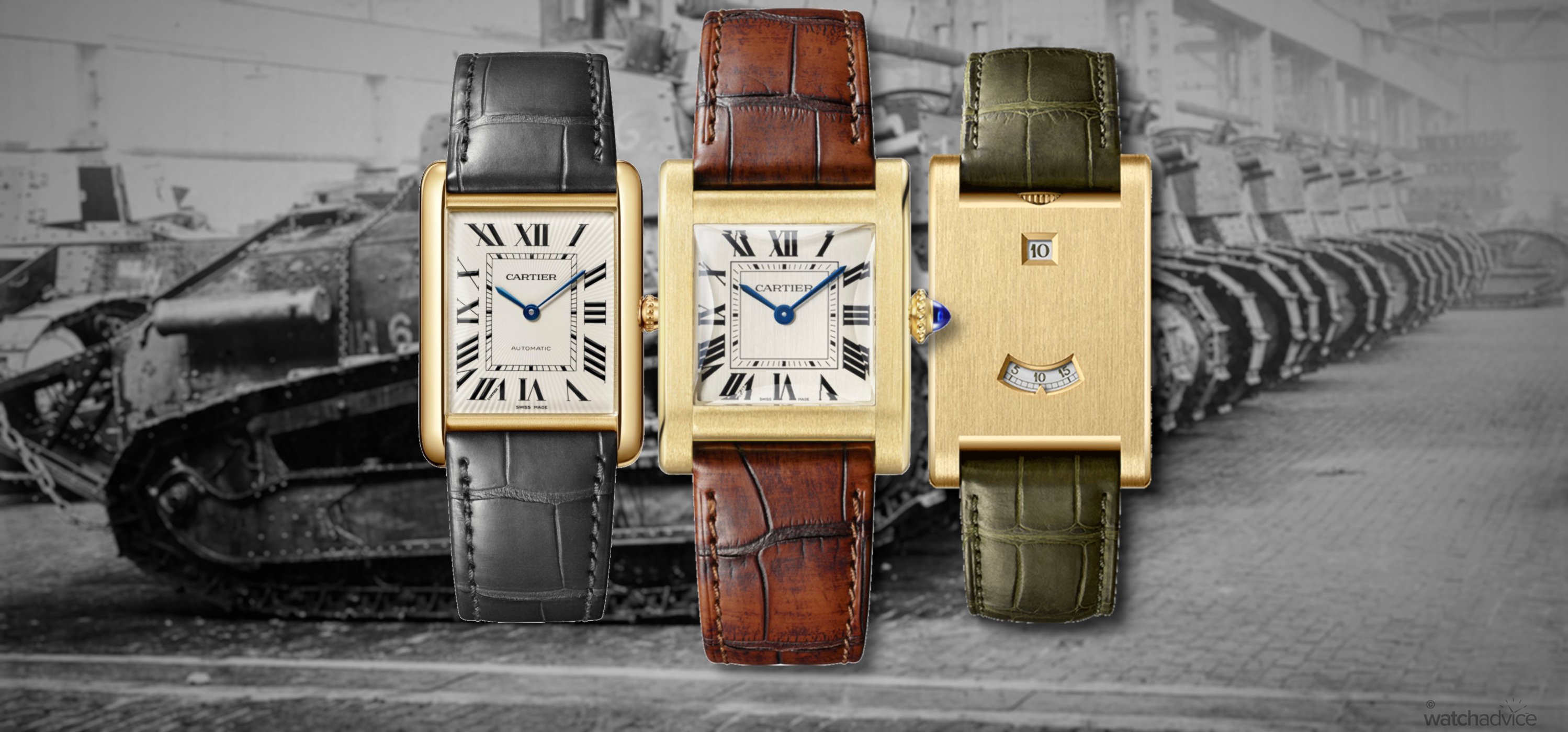The Cartier lineup is packed full of exceptional timepieces, but just one watch stands as perhaps their greatest creation. But how did the Cartier Tank become the icon it is today?
This article is written in collaboration with Cartier
In the watch world, several factors can make a timepiece stand tall above its peers. Sometimes it’s a brilliant new design. Other times, the engineering takes centre stage. It can even come down to an exceptional level of craftsmanship. Yet, even with all three combined, nothing surpasses a good story. For the Parisian watchmaker-jeweller Cartier, stories inform almost every facet of every creation in their catalogue. And if you wanted to spend as much time as possible inside a Cartier boutique, all you’d have to ask is this: “Tell me about the Cartier Tank.”
Favoured by princesses, pugilists, and powerful figures alike, the Tank has embodied the spirit of every era it has lived through. Few collections in horology deserve the term ‘timeless’ as much as this one. So, what led to the creation of such a multi-generationally defining watch? Why was it so effortlessly adopted by anyone who wore it? And why did Andy Warhol refuse to wind it?
War Never Changes
The early 20th century was defined by two forces: innovation and war. With industrial production mastered, nations turned their focus to breaking the stalemate of trench warfare. The heavily fortified lines created a demand for new machines that could safely cross the killing fields between trenches.
Saint-Chamond Tank (1917-1918)
The second ever tank invented by the French Armed Forces, the Saint-Chamond’s burly appearance and heavy weaponry belied its underpowered armaments and many technical issues. For the French, having a mechanically sound tank on the frontlines was paramount, and the Saint-Chamond only partially filled the gap.
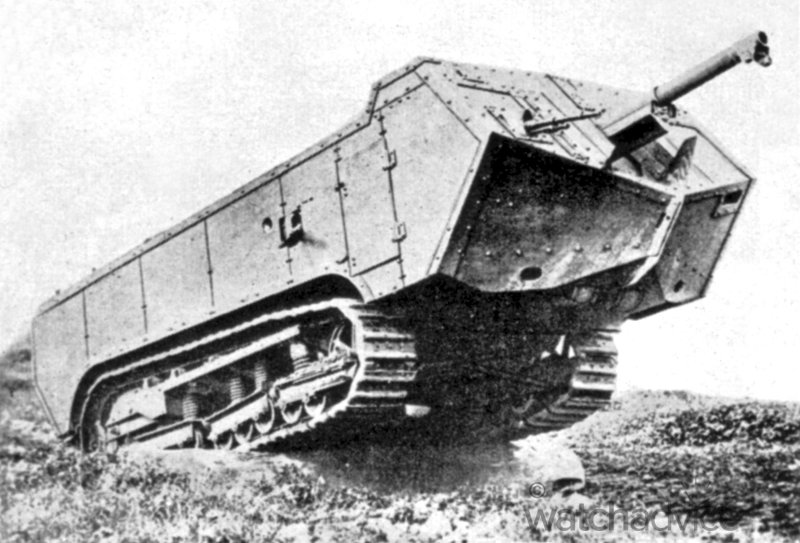
This is where the story of the tank begins. Not the Cartier Tank, but rather the tank: the armoured fighting machine. With thick armour, tracks, heavy guns and an internal combustion engine, it was built to power through mud, barbed wire, and anything – or anyone – in its path. Three major belligerents of the war, Britain, Germany, and France, each advanced their own designs: The British fielded their Mark series, while the Germans countered with the A7V. France, working in parallel with its allies, first deployed the Schneider CA and the bulky Saint-Chamond – both serviceable, but fundamentally flawed.
In 1916, Louis Renault and Rodolphe Ernst-Metzmaier created the answer to France’s tank woes: the Renault FT light tank, later known as the FT-17. Built between 1917 and 1919 by Renault, it featured the first fully rotating turret – a design that became the blueprint for nearly every tank thereafter. Well, almost every tank.
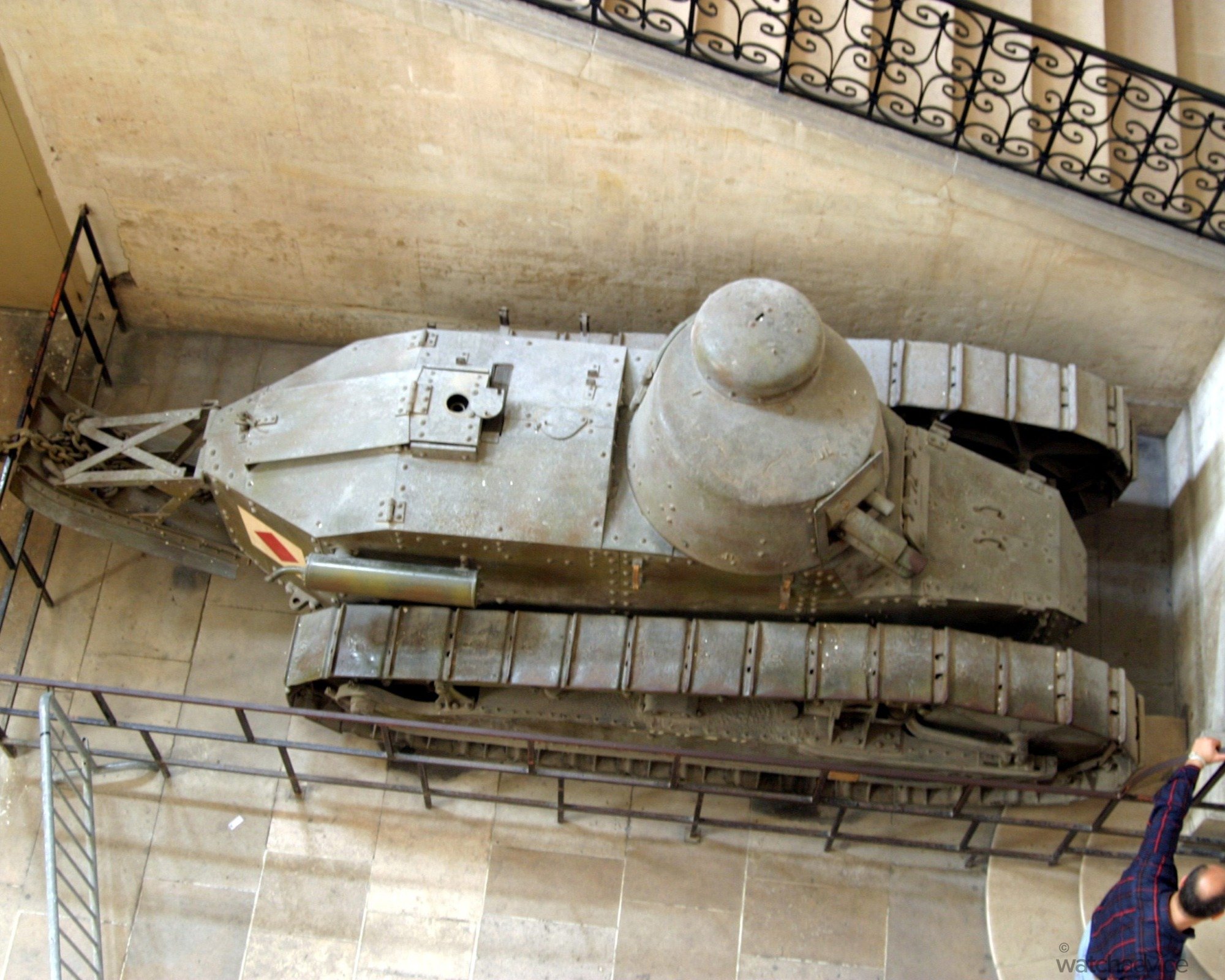
A Renault FT (FT-17) in Musée de l’Armée, Les Invalides, Paris
The first tank ever to feature a rotating turret head, the Renault FT became the blueprint for the modern, versatile tanks you see today. Was it irony, or a masterstroke of foresight that saw the Cartier Tank become as versatile as its inspiration?
This is where Louis-François Cartier re-enters the story. Though never stationed on the front lines, he served France as a military driver until his release in 1917. The timing is telling; With Renault’s revolutionary FT tank entering production that same year, Cartier almost certainly encountered it first-hand — or at the very least studied its photographs, which quickly took up French newspapers by the time the Armistice was signed.
Inspired by the machine’s distinctive top-down silhouette, Cartier set about translating its form into a timepiece. In 1917, he sketched the first design of what would become the Tank, debuting the Tank Normale. The following year, it was unveiled to the world, and by 1919, it had officially entered production. Before then, however, it had already found a home on one major public figure, and the first of many to follow: General John J. Pershing of the United States Expeditionary Forces. Far prior to the Tank’s release, it was General Pershing who was presented the prototype as a gift from the Cartier house.
General John J. Pershing (1860-1948)
Nicknamed ‘Black Jack,’ General Pershing was a major part of the United States’ involvement in World War I, particularly in the Meuse-Argonne Offensive that raged until the very end of the War. He would also be one of the first recorded individuals to ever receive a Cartier Tank Normale.
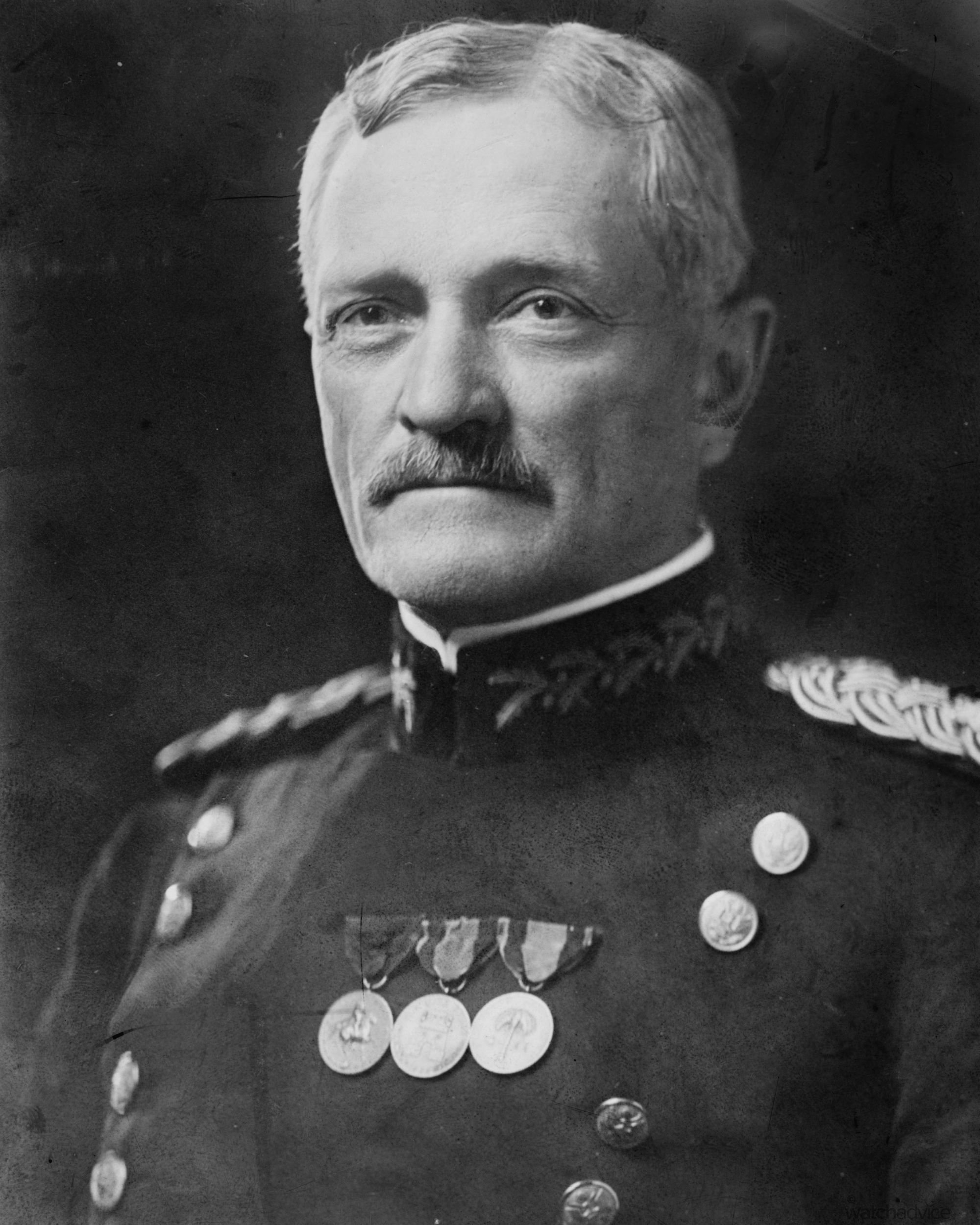
Though this was Cartier’s sophomore effort in the wristwatch space — the first, of course, being the Santos — the idea of strapping a watch to one’s forearm was unconventional. The pocket watch still reigned, and the Tank’s bold, modern design likely felt unfamiliar to many. Eventually, however, the tide turned: Soldiers returning from the trenches had grown used to wrist-bound timepieces out of necessity, and the practice quickly spread to civilian life. Riding that wave of change, the Cartier Tank was not only accepted — it approached the stage, and it never left.
Related Reading: Cartier Santos Stories – A Brief History Of The Iconic Watch
Tanks A Lot!
Perhaps no other timepiece has been so consistent in design as the Cartier Tank. Despite more than a century of innovation, revisions, and variations, the Tank’s DNA has remained remarkably intact. Louis Cartier’s original vision, now known as the Tank Normale, set the foundation for this enduring identity.
First came the case – rectangular in shape, which framed a square dial. Then the absence of a bezel, with the case sides, or brancards (‘stretchers’), evoking the silhouette of the Renault FT. Several other elements also emerged to define the Tank’s aesthetic: Roman numerals featuring the watchmaker’s ‘4’ (‘IIII’ instead of ‘IV’), blued steel hands, a crown set with a blue sapphire cabochon, and the chemin de fer, or railroad, minute track. Finally, completing the look was a leather strap that flowed seamlessly into the ‘lugs’ of the brancards, creating a natural transition from metal to leather.
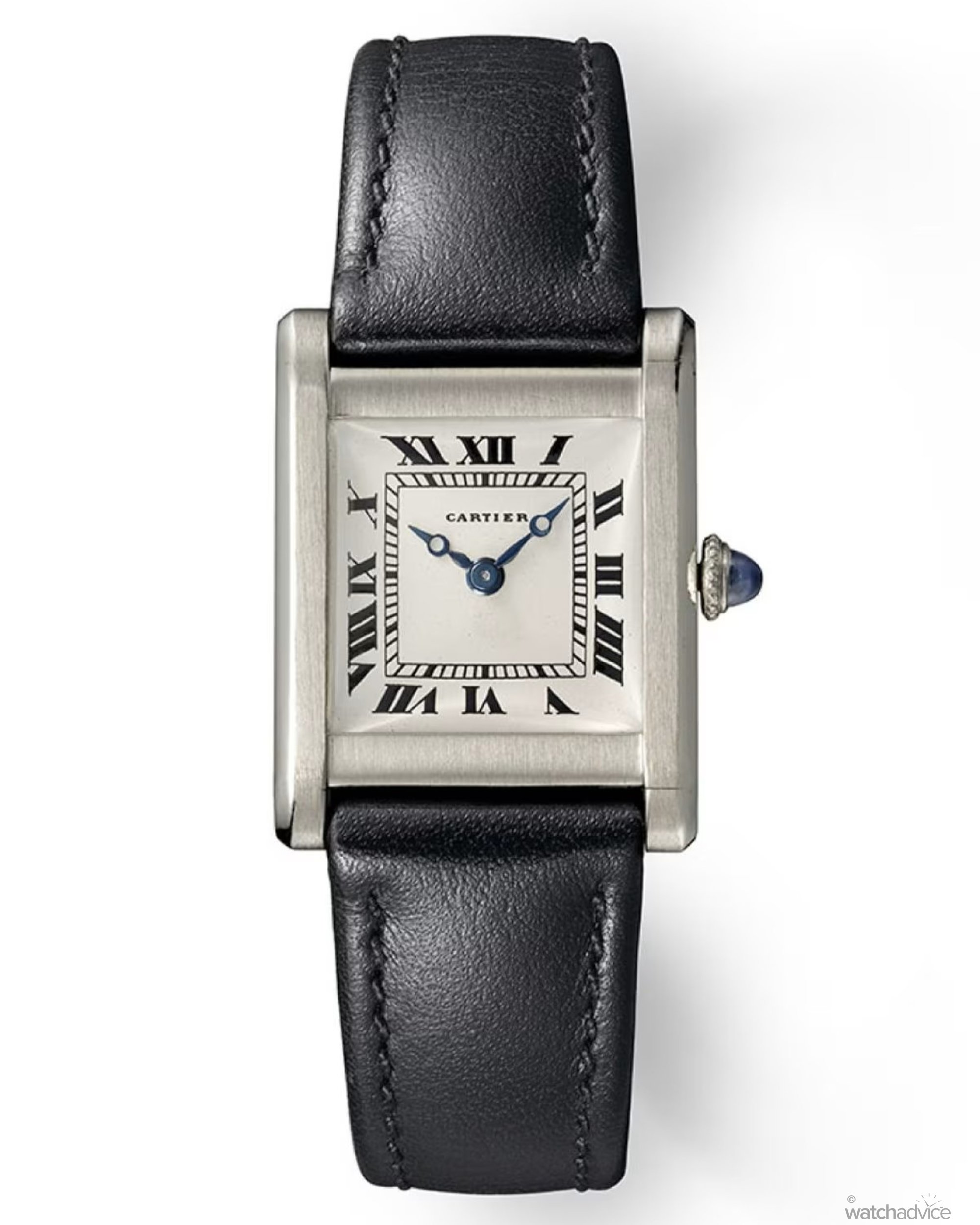
Cartier Tank Normale, 1919
The earliest rendition of the Cartier Tank, while not as ubiquitous as its later siblings, still laid the groundwork for what could become the most iconic timepiece of Cartier’s entire catalogue.
Related Reading: Cartier’s New Tank Normale – Keeping The Spirit Of The Original 1917 Model Alive
Then came a new, more dynamic decade: the 1920s, an era defined by flappers, jazz, and, most importantly, Art Deco. Even in this new cultural landscape, the notion that wristwatches were not the norm – particularly for men – remained widespread. While the Tank Normale helped challenge these conventions (no pun intended), Cartier recognised a growing demand for a more avant-garde and masculine interpretation of the Tank.
So, in 1921, the Tank Cintrée was born: a Tank in essence, but with a stretched and curved silhouette designed to contour more naturally to the wrist. Not only that, but the dial, crystal, numerals, and minute track were all elongated to match the Cintrée’s refined profile. It also marked the first Tank to adopt the more conventional sword hands in place of the Breguet-style ‘apple’ hands used on the Tank Normale.
Cartier Tank Cintrée, 1970
While this timepiece is a later-model Cintrée, the design remains the same, lengthening the Tank Normale and elegantly curving it around the wrist. This was Cartier’s first of many avant-garde innovations of the Tank.
Image courtesy of Christie’s
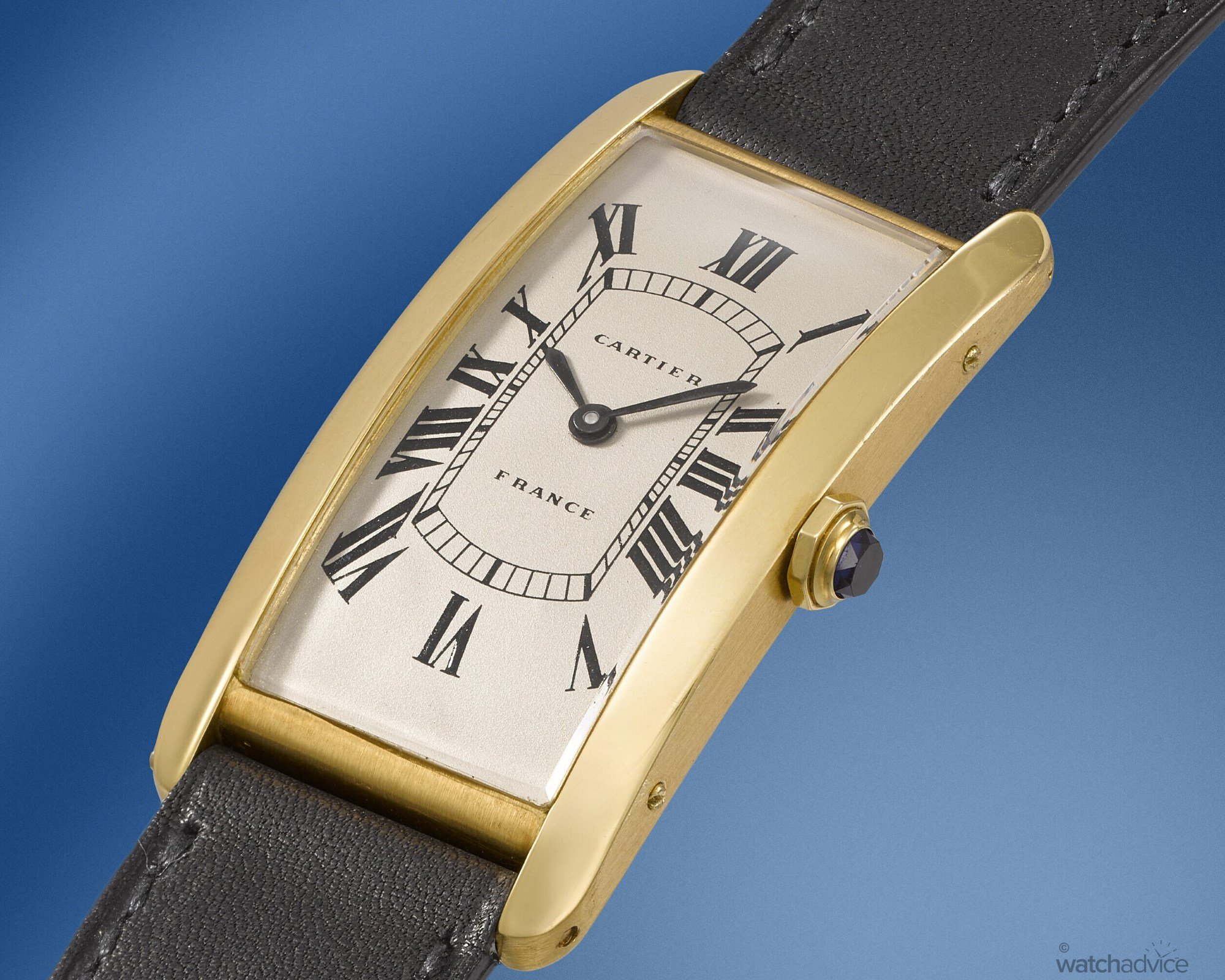
While both models enjoyed their moments in the spotlight, the collection remained somewhat divisive. The Tank Normale was elegant, yes, but its blockier frame and dial made it less streamlined than Louis envisioned. The Tank Cintrée, meanwhile, was daring and uniquely of its time, but felt too ambitious and ‘out there’ for the general enthusiast. What the Tank needed was a fresh, versatile design – one that reflected Cartier’s creative ambition.
In 1922, he unveiled the Tank Louis Cartier – a model line so refined he put his own name to it. Gone were the sharper edges and square proportions of the Tank Normale, replaced with a softened form, elongated brancards, and a rectangular dial that echoed the case. The Tank Louis Cartier fit seamlessly into the aesthetic of the Art Deco era. Whether Louis realised it at the time (and perhaps he did), this interpretation of the Tank would become not only his most popular design, but also the gold standard of the entire collection.
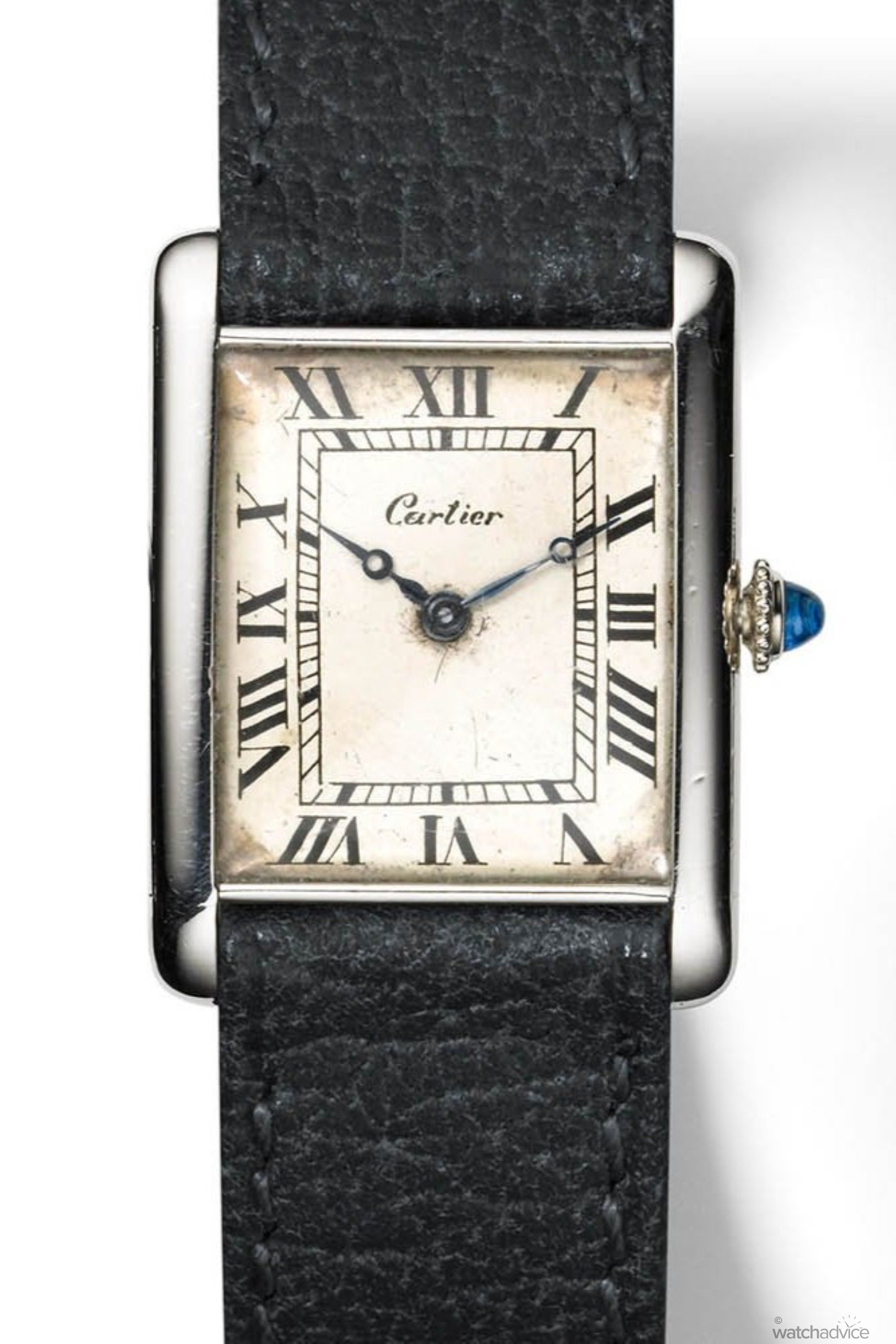
Cartier Tank Louis Cartier, 1925
The Tank Louis Cartier introduced the rounded silhouette that the watch world today still associates with the standard Tank line.
Related Reading: Introducing The New Cartier Tank Louis Cartier
Very quickly, it became the definitive dress watch – the weapon of choice for those with a taste for elegance, style, and refinement. These qualities manifested in many forms. From Princess Diana to Muhammad Ali, Jackie Kennedy to Andy Warhol, figures of power and cultural influence across generations gravitated towards the Tank Louis Cartier of their era. Andy Warhol, in particular, was famous for not even bothering to wind his Tank, once remarking: “I don’t wear a Tank to tell the time. In fact, I never wind it. I wear a Tank because it’s the watch to wear.”
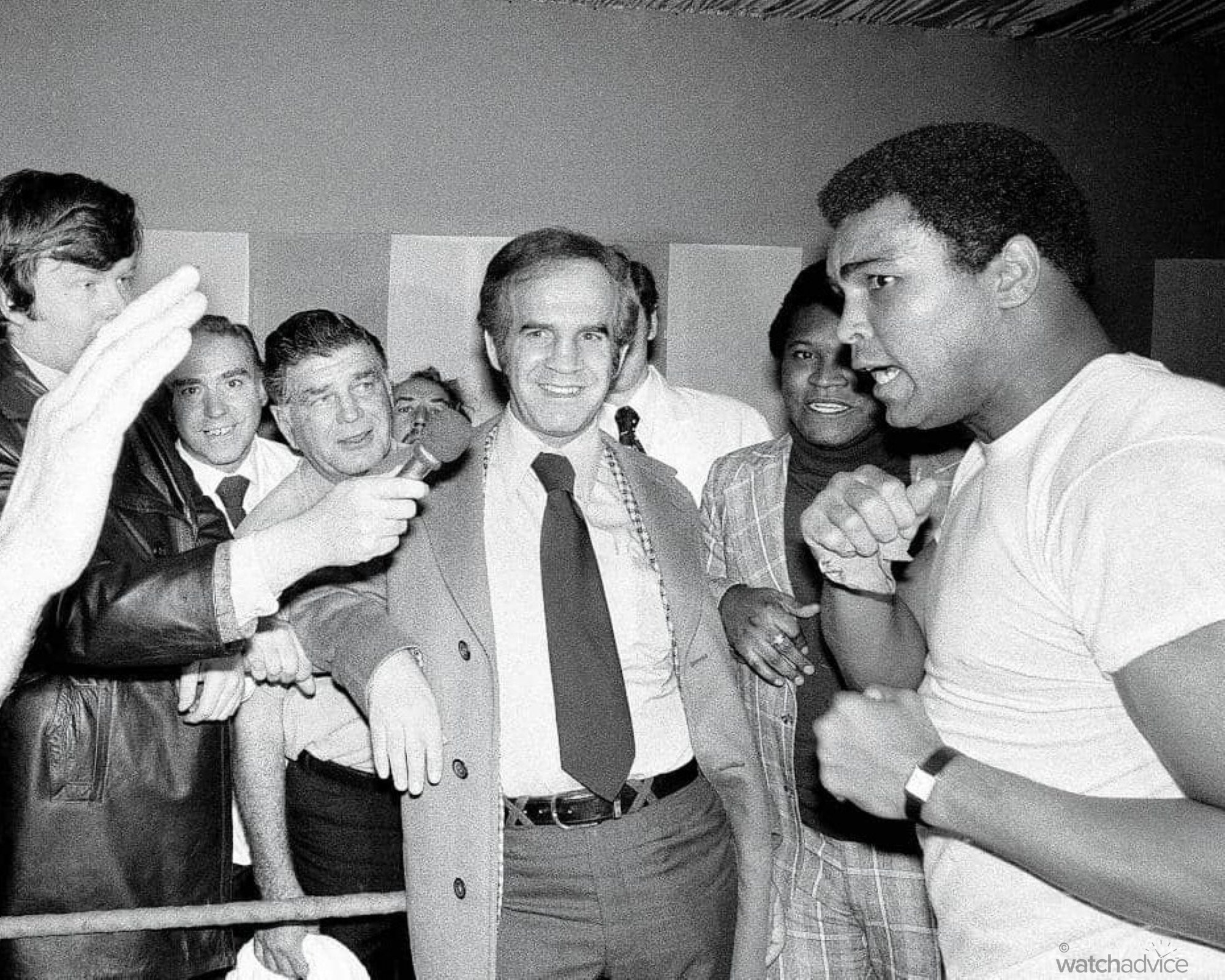
Even 103 years on from its release, the impact of the Tank Louis Cartier on horological culture is still being felt, with almost every rectangular dress watch taking cues from the collection. Yet that hasn’t stopped the Cartier maison from continually innovating on this timeless design. Several other icons soon followed – the East Asian-inspired Tank Chinoise in the same year, and the more obscure Tank Obus in 1923, with its bullet-shaped brancards.
Five years later, in 1928, the Cartier Tank ventured into uncharted territory with the release of the remarkable Tank à Guichets. Though it would eventually find its way back into the spotlight, the Tank à Guichets was initially reserved for only the most exclusive of clients – one of them being jazz legend Duke Ellington. Departing from the traditional dial layout of previous Tank models, the Tank à Guichets featured two cut-outs within a solid metal face, displaying the hours and minutes digitally.
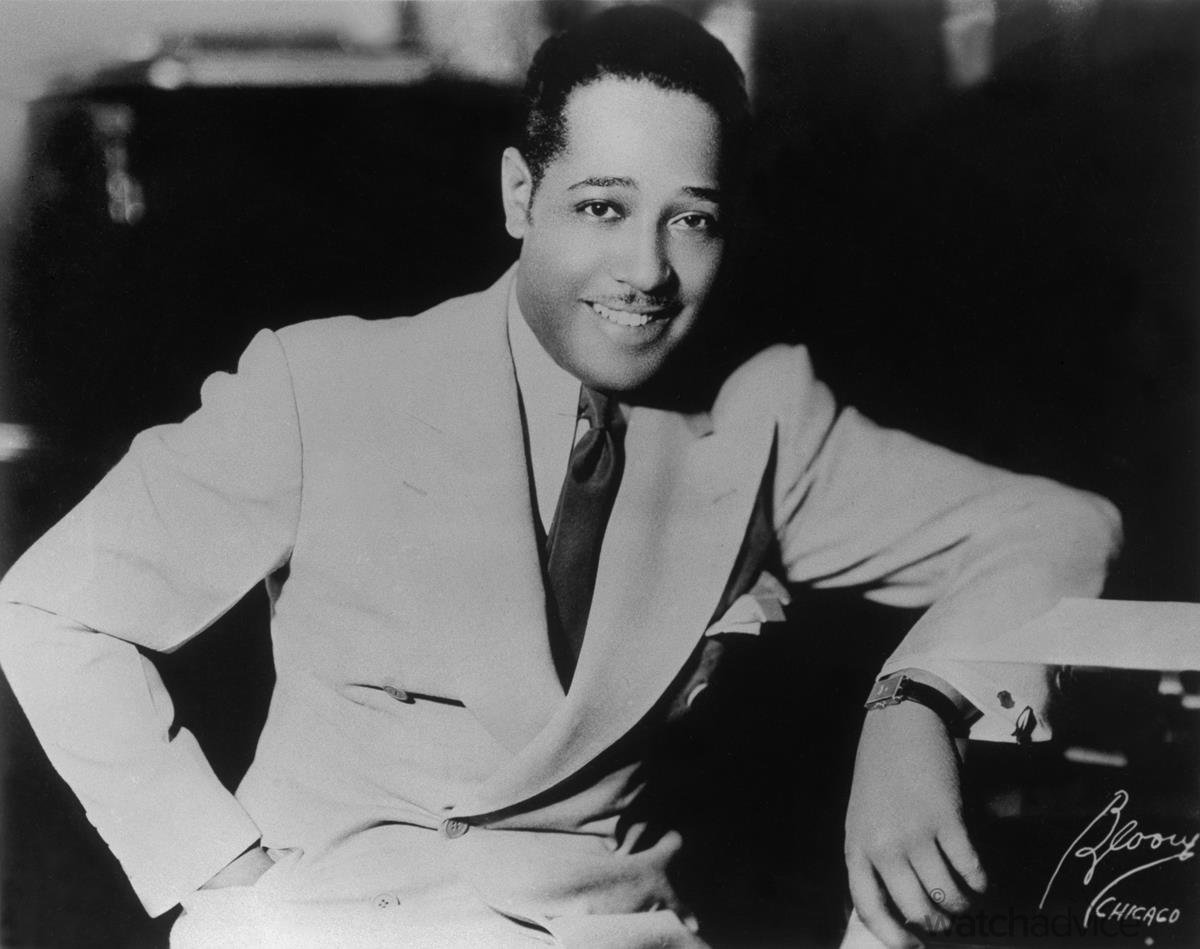
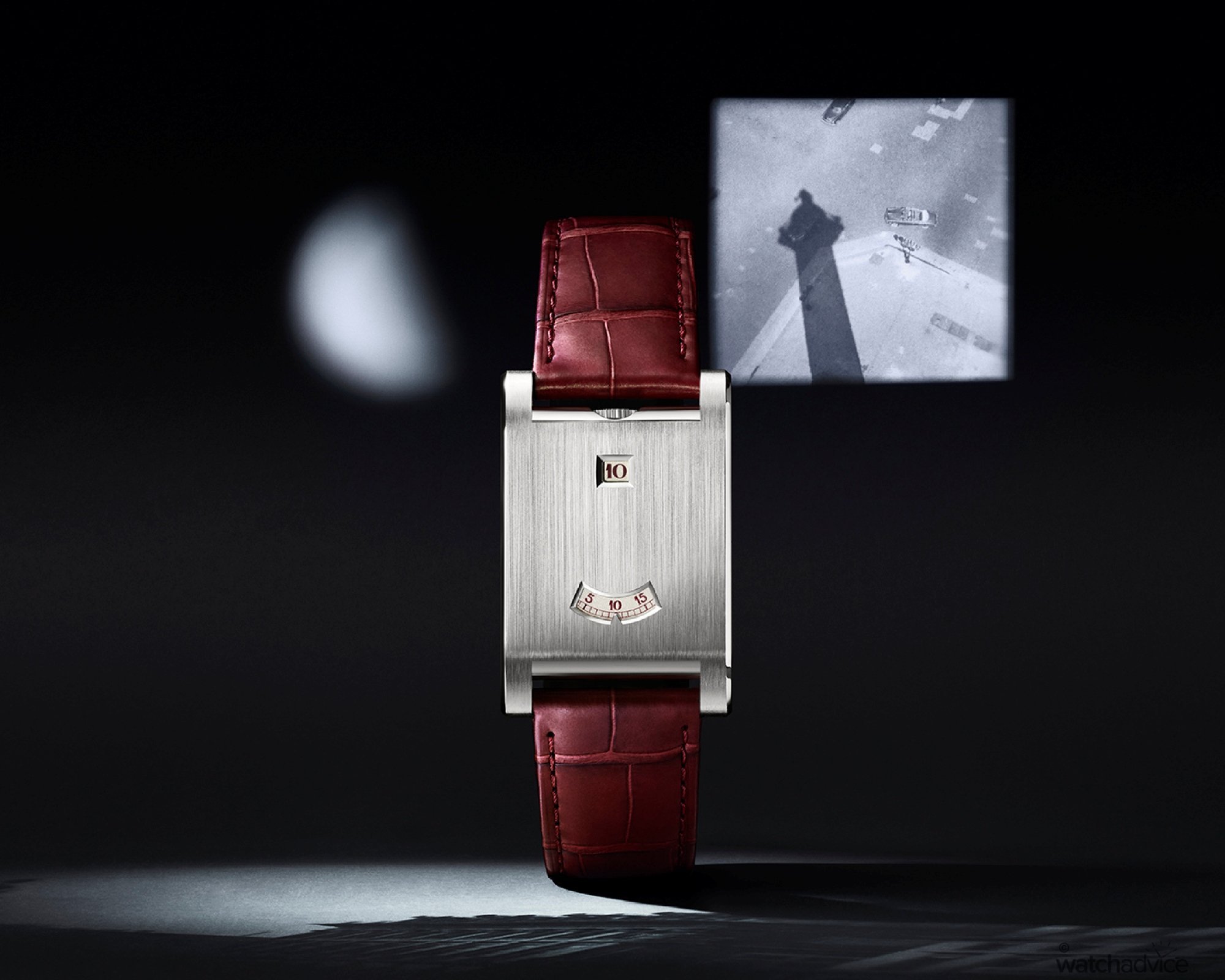
Related Reading: Cartier’s New Privé Tank à Guichets Remasters The Elegance of Simplicity
With this daringly unorthodox release, the Tank entered a new age of innovation, soon joined by other imaginative creations such as the waterproof Tank Étanche of 1931, the reversible Tank Basculante of 1932 (please bring this back!), 1933’s Tank Monopoussoir, and the delightfully offbeat Tank Asymétrique of 1936.
For a time, these models rotated in and out of Cartier’s catalogue, while the Tank Louis Cartier remained the collection’s steady anchor. But when the watch world was shaken by the Quartz Crisis, Cartier was once again forced to respond. This time, however, innovation wasn’t driven purely by creative ambition – like many other watchmakers of the era, Cartier was fighting for survival in a radically changing age of horology.
So, in the late seventies, the brand unveiled the Cartier Tank Must de Cartier as its answer to the shifting tides. While it shared the same architecture as the Tank Louis Cartier, the Must de Cartier was designed as a more accessible alternative to its older sibling. For the first time, Cartier used quartz movements instead of traditional mechanical ones, and the solid gold case was replaced with gold plating.
Cartier Tank Must de Cartier, 1977
Adorned with a vermeil dial, this Tank Must de Cartier piece was a part of Cartier’s response to the rapidly encroaching Quartz Crisis of the time: A more accessible, quartz iteration of the iconic Tank.
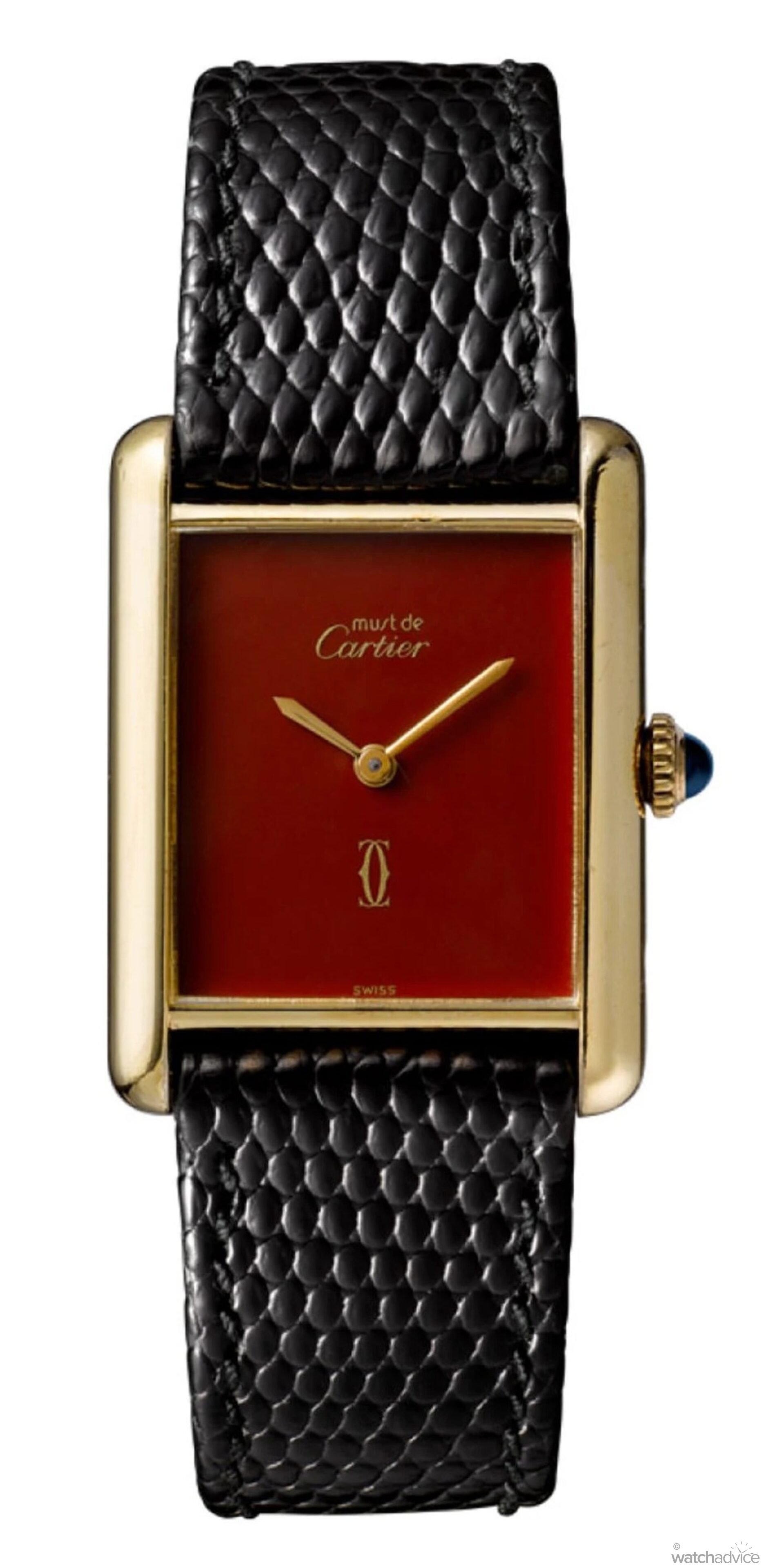
Fortunately, by the time the Quartz Crisis hit, the Tank had already established itself as a staple of the watch world. The Must de Cartier only cemented the Tank’s horological and cultural relevance, expanding its reach to a whole new audience of watch lovers worldwide.
Finally, as the turn of the millennium drew closer, Cartier introduced two more iconic branches of the collection. First, in 1989, came the Tank Américaine, a modern refinement of the Tank Cintrée’s elongated silhouette. A few years later, in 1996, the Tank Française joined the line-up, offering a modern, distinctly feminine entry point into the Tank family.
The Tank Today & Tomorrow
In the modern day, the Tank stands as one of the most celebrated and revered timepieces in watchmaking history. That doesn’t mean Cartier was done with it by any stretch – modern releases such as the integrated-crown Tank Anglaise in 2012 and the display-caseback Tank MC in 2013 both earned worldwide acclaim.
Still, it seems the Tank’s golden age of innovation has finally drawn to a close. That’s hardly a bad thing, though – the Tank’s archives are now so rich, storied, and beautiful that all it takes to bring it back to the forefront of the watch world is for Cartier to remaster and rotate one of its classic designs into the spotlight.
Few watches have undergone such rapid and disruptive evolutions as the Tank, and fewer still have displayed such remarkable diversity whilst doing so. No two versions have ever looked quite alike, and none occupy the same space within the watch world. Yet, all of them retain the unmistakable DNA first conceived by Louis-François Cartier all those years ago.
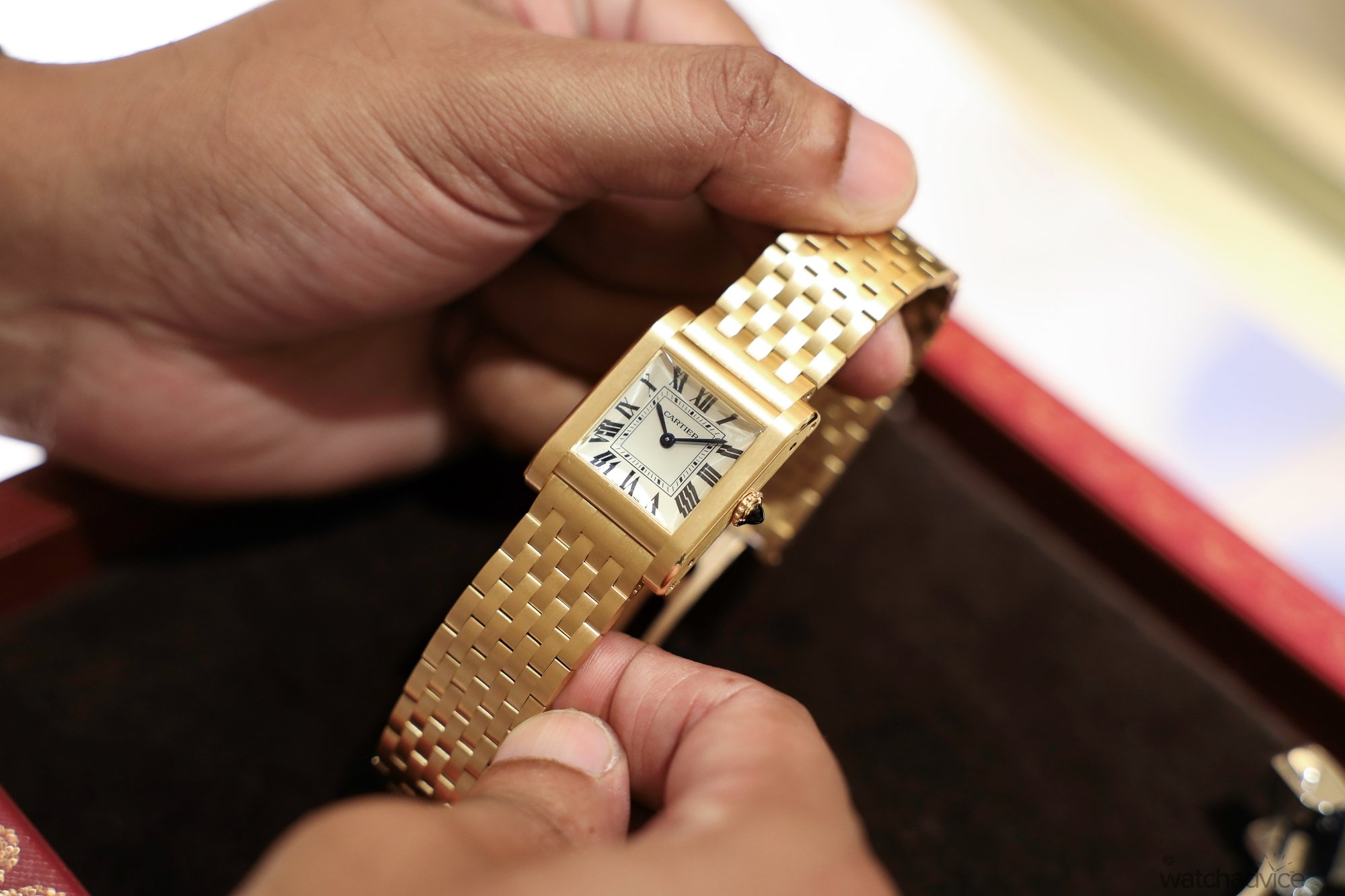
To that end, the Cartier Tank line is to watchmaking what the Royal Family is to popular culture. Unless you have your ear firmly pressed to Cartier’s design department doors, even seasoned watch lovers may struggle to keep up with what the maison has in store next. Perhaps it’s the return of an original icon — as when the Normale was brought back in 2023 as part of the Privé collection. Or maybe it’s the revival of something more abstract, like the re-release of the Tank à Guichets at Watches and Wonders 2025. We may never know what could be coming up next!
Still, the Tank isn’t just defined by its versatility, elegance, or diverse subtypes, but also by the remarkable people who wear it. The Tank has never fallen out of favour with those championing elegance, success, and iconic status. Academy Award–winning actor Rami Malek has proudly sported several Tank timepieces, as does basketball legend Dwyane Wade. Even if your name isn’t up in lights, the Tank seamlessly amplifies the power of those that wear it. When you talk with a Tank, others tend to listen.
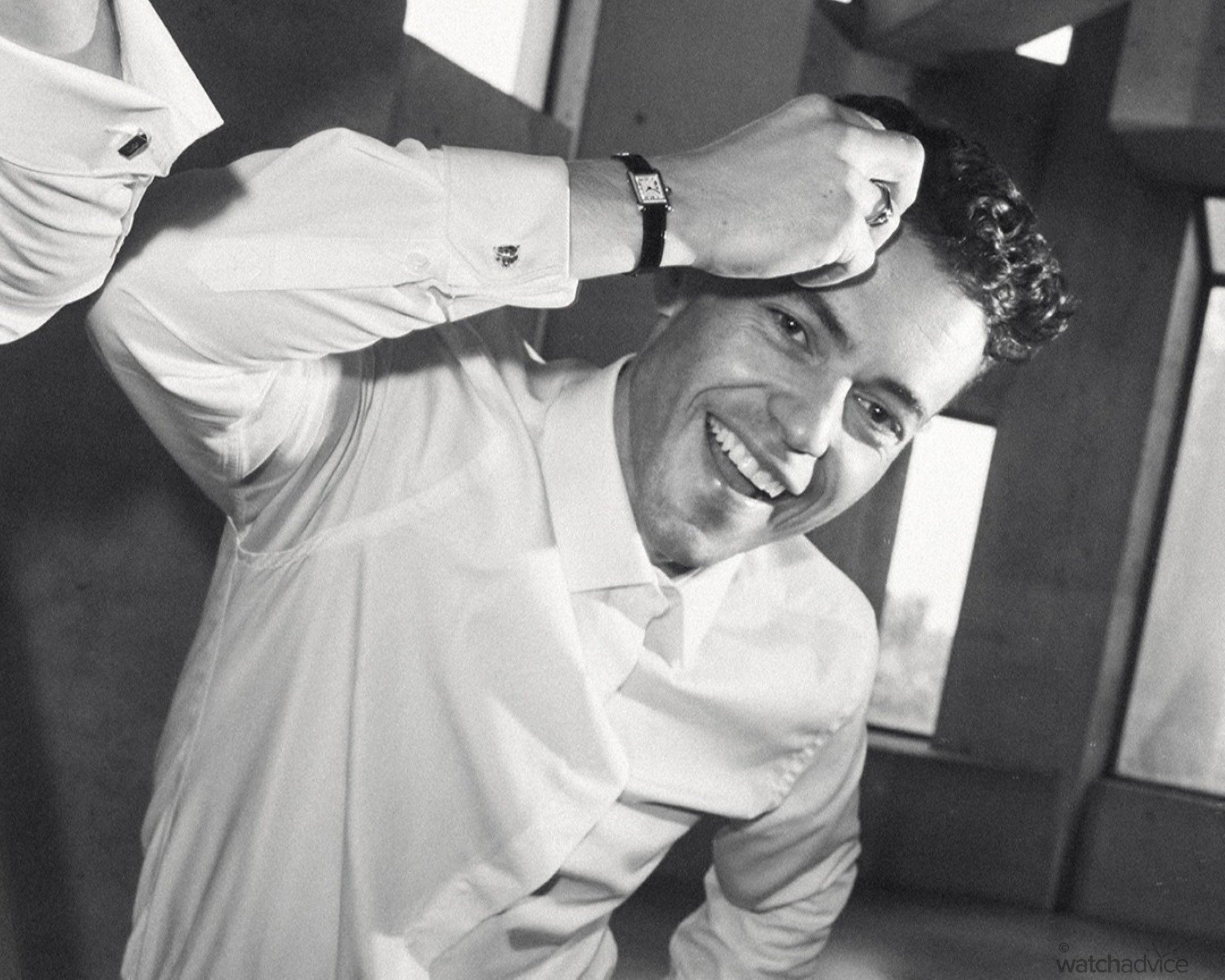
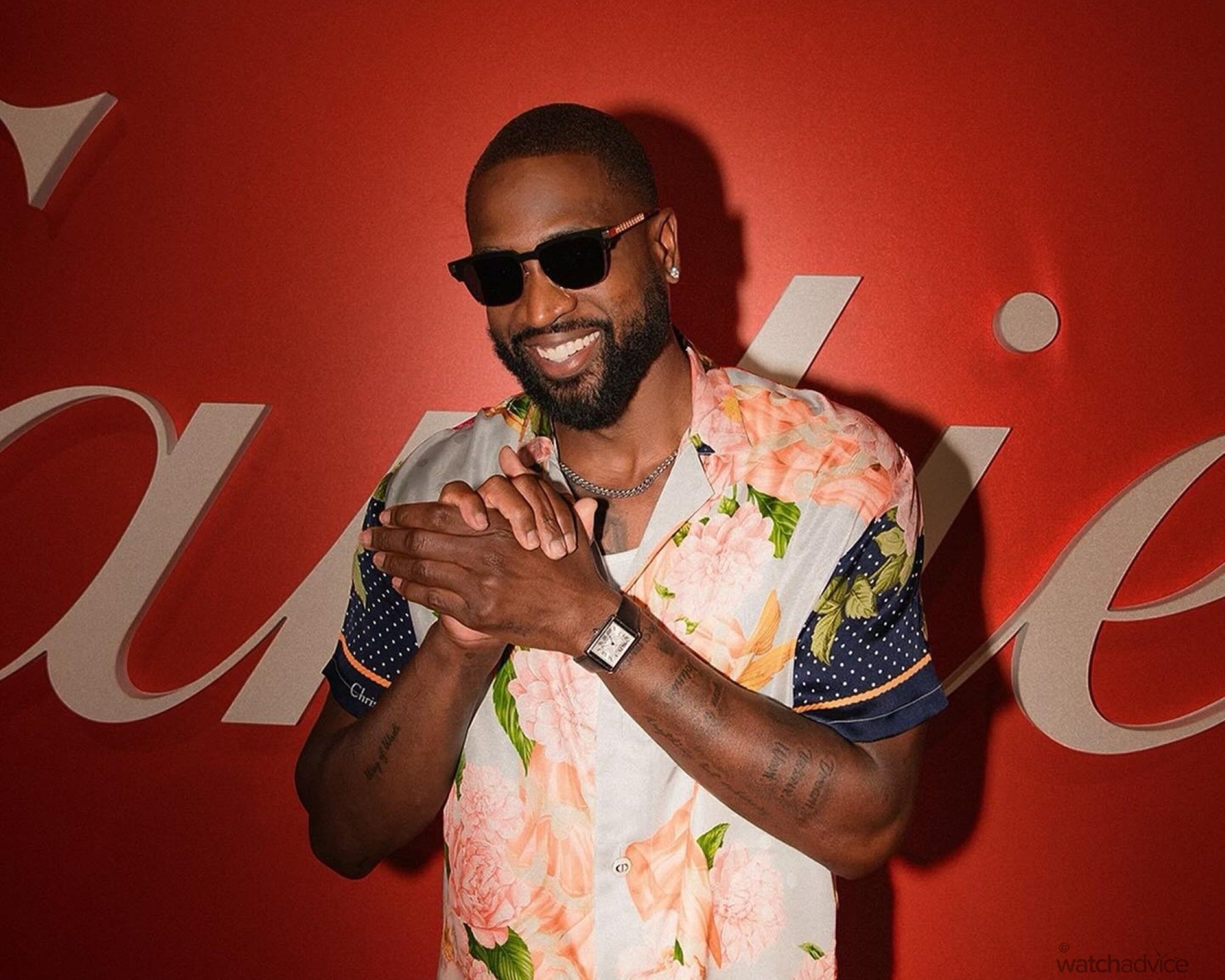
Because of its varied roster and its ubiquitous presence in both watchmaking and culture, the Cartier Tank’s future is firmly secured. The Tank never needed to reinvent the wheel — or, in this case, the treads — to remain relevant. Yet Cartier has done so countless times, purely for the love of the craft, pushing the boundaries of their own creative vision. So long as there are individuals of refined repute, there will be a Cartier Tank waiting for them. Because now, the Tank is no longer just a watch, but a cultural constant, and will surely remain so for all time.
This article was written as part of a commercial partnership with Cartier. Watch Advice has commercial partners that work with us, however, we will never alter our editorial opinion on these pieces, a fact that is clearly communicated to the brands when entering into a commercial arrangement.


